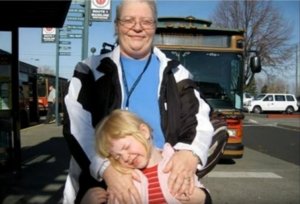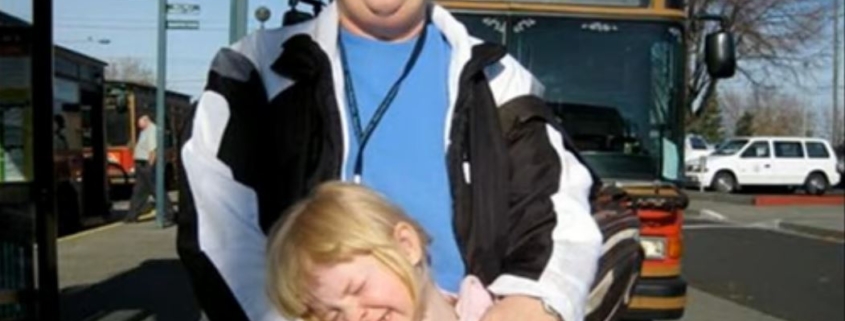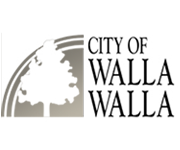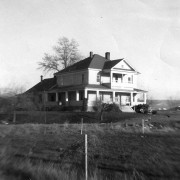Walla Walla 2020 and Beyond: Thank goodness for the bus
The following article is published in the Walla Walla Union-Bulletin’s series “Walla Walla 2020 and Beyond.” The full series of articles, published monthly, can be found at the UB’s site here.
Thank goodness for the bus
By STANLEY GREEN |
Editor’s Note: Stanley Green is a transportation engineer and former assistant professor of engineering at Walla Walla University who for many years chaired the Walla Walla 2020 transportation committee.
 Public transit service is critical to our quality of life and economic vitality.
Public transit service is critical to our quality of life and economic vitality.
Public transportation helps people travel to work and school, to area businesses and service providers, and to friends and family, and it allows us all to participate in community events as active citizens. Transit adds energy to the whole community by giving everyone — regardless of income, age or physical ability — the freedom and mobility to accomplish what is important to us.
In August 2008, 20 years after our founding, the Walla Walla 2020 transportation committee began focusing on the chronic underfunding of our local transit system. As a result, we sent a formal letter to the board of Valley Transit urging an increase in the local sales tax for transit and pledging our support for a ballot measure to accomplish that. Our letter said in part:
“We agree with the statement in the Revised Code of Washington that the maintenance and operation of an adequate public transportation system is an absolute necessity and is essential to the economic, industrial and cultural growth, development and prosperity of a municipality … and to protect the health and welfare of the residents of such municipalities and the public in general … .”
By 2009, Valley Transit was clearly in the midst of a financial crisis, following a reduction in funding and revenues. The transit board believed there would be no support among either riders or the general public for an election campaign and began planning for serious cuts in services. To accomplish this, they scheduled public hearings to explain why cuts had to be made and to receive input from riders and others as to which routes and services should be terminated.
Being unwilling to accept the degrading of transit service without vigorous discussion, the 2020 transportation committee reached out to others in the community who had either publicly voiced concern about cuts or who we thought were supporters of public transit.
We were able to generate a large turnout at the hearings of people who supported a ballot measure, and we also gathered over 2000 signatures on a petition calling for a vote.
Although several of the transit board members continued to be pessimistic about the outcome of an election, they agreed to put the measure on the February 2010 ballot, and to hold off on any service cuts until the election results were in.
A campaign committee was quickly formed, with Dan Clark as the campaign manager and Dr. Jack Barga and then-mayor Barbara Clark as the formal committee co-chairs. With strong support from the presidents of all three local colleges, we were able to obtain endorsements from leaders of twenty other non-profit organizations and public agencies in the community.
In addition, we gained endorsements from all sectors of our local economy, including hospitals, medical and dental clinics, banks, grocery stores, restaurants, realty companies, hair dressers, book stores, art studios, the construction industry, general retailers and others.
The campaign was a vigorous one, including door-to-door pamphlets, letters to the U-B from bus riders and others, yard signs, speakers at service clubs, and telephone trees.
When the campaign began, there was a lot of talk in the community about transit buses running empty, serving only a small segment of the population who should be paying the costs themselves and being irrelevant to most people.
During the campaign, we showed that Valley Transit had been providing approximately 800,000 rides a year, carrying 2600 people a day, and an average of 27 passengers per hour per bus, making it among the top transit systems in the state, as far as passengers per bus per hour, with the lowest operating cost per hour.
By the end of the campaign, we had convinced the community that critical public transportation is for everyone. As a result, the Valley Transit measure passed by a vote of 76.3% to 23.7% — an astounding victory for a tax increase during a recession.
You can visit our campaign website to see information presented to the community, as well as the slide show “Thank Goodness for the Bus” featuring photos by Norm Osterman, video by Vic Phillips, and our campaign song by Barbara Clark, at transitcampaign.blogspot.com .
Beyond local transit service, when Walla Walla lost its only public surface transportation connection to the rest of the continent, Walla Walla 2020 took the lead in the establishment of the Travel Washington program, whereby the Washington State Department of Transportation subsidizes and coordinates intercity bus service in underserved rural corridors.
Through Travel Washington, Grape Line buses operate three times per day in each direction, connecting Walla Walla, College Place and communities in western Walla Walla County with intercity bus, passenger rail and airline service in Pasco, and providing a crucial link to the contiguous continental public transportation network.
Valley Transit also coordinates with other carriers in the region, which provide direct service to Milton-Freewater, the Umatilla Indian Reservation and Pendleton, Columbia County, Wash. and Grant County, Oreg.
Looking to the future, Valley Transit has launched a real-time bus-tracking information system by which passengers can know the actual expected arrival time of their buses. Valley Transit has also recently launched battery-electric bus service, bringing electric public transportation back to College Place and Walla Walla for the first time since 1931.
With greater appreciation of the importance of public transportation for the citizens of our communities and our economies, we believe things are looking bright for the future of transit for our area and all the public benefits associated with that.











